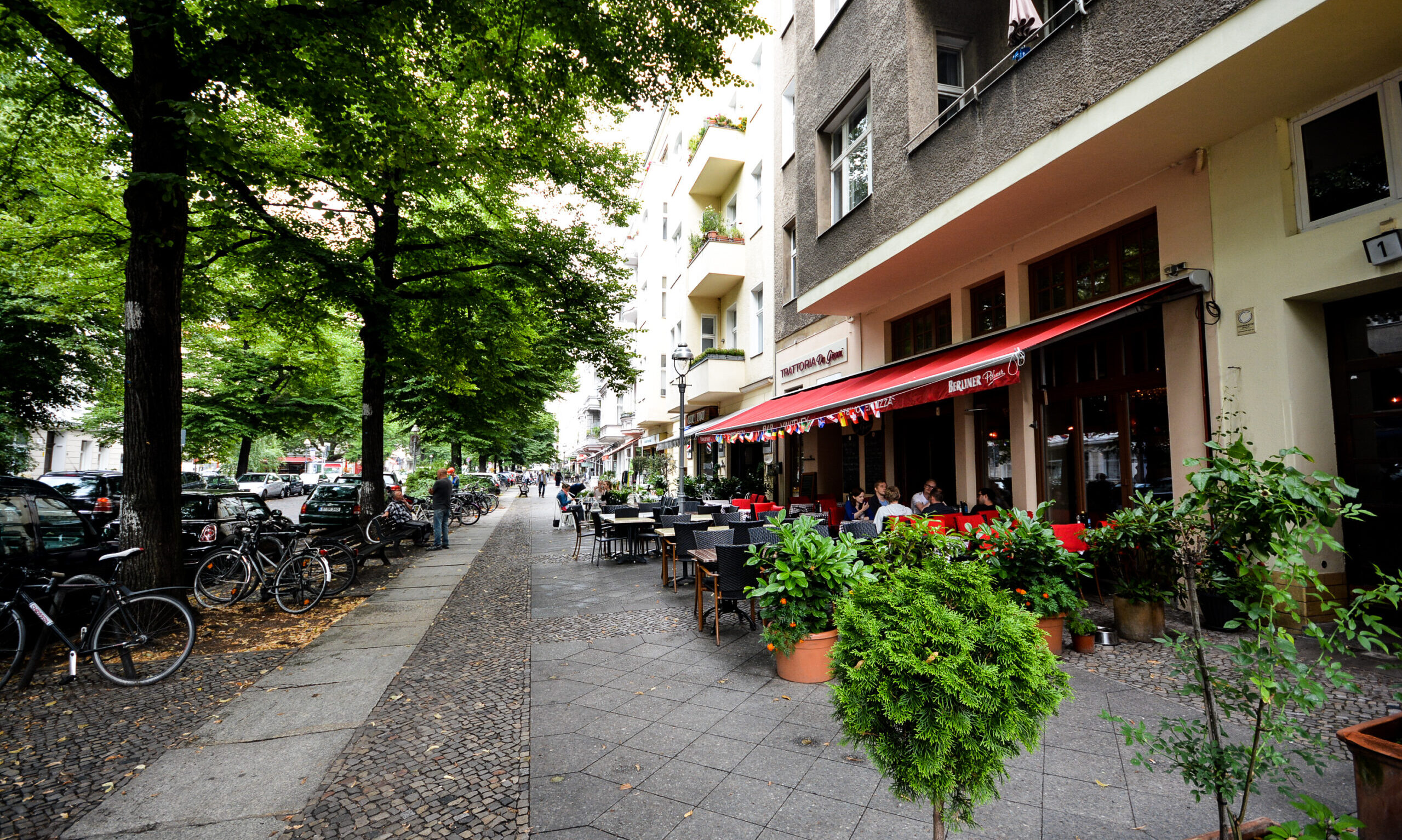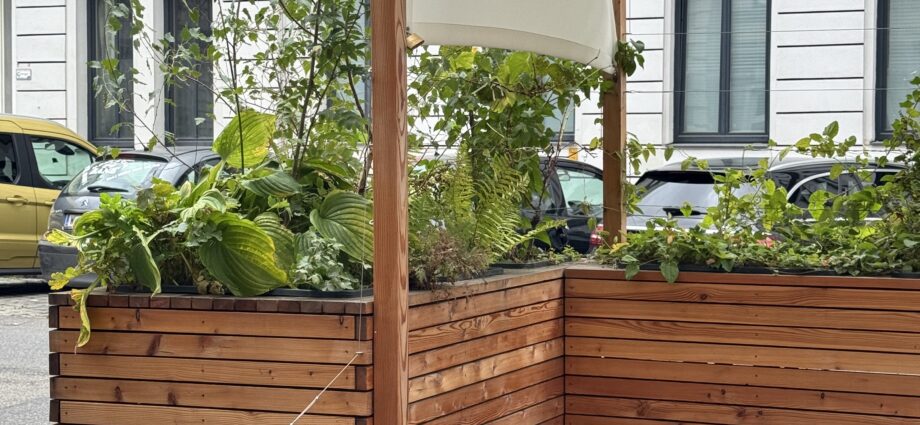By Savannah Siekierski
Savannah is currently doing her Master’s level internship at Pedestrian Space. As part of her internship with us, she is crafting ‘notes from the field’ from her research to share here. This is the second in a series of media field notes she is producing related to her research.
When residents shape the street: the case of Vienna’s parklets and the rise of citizen-led urbanism
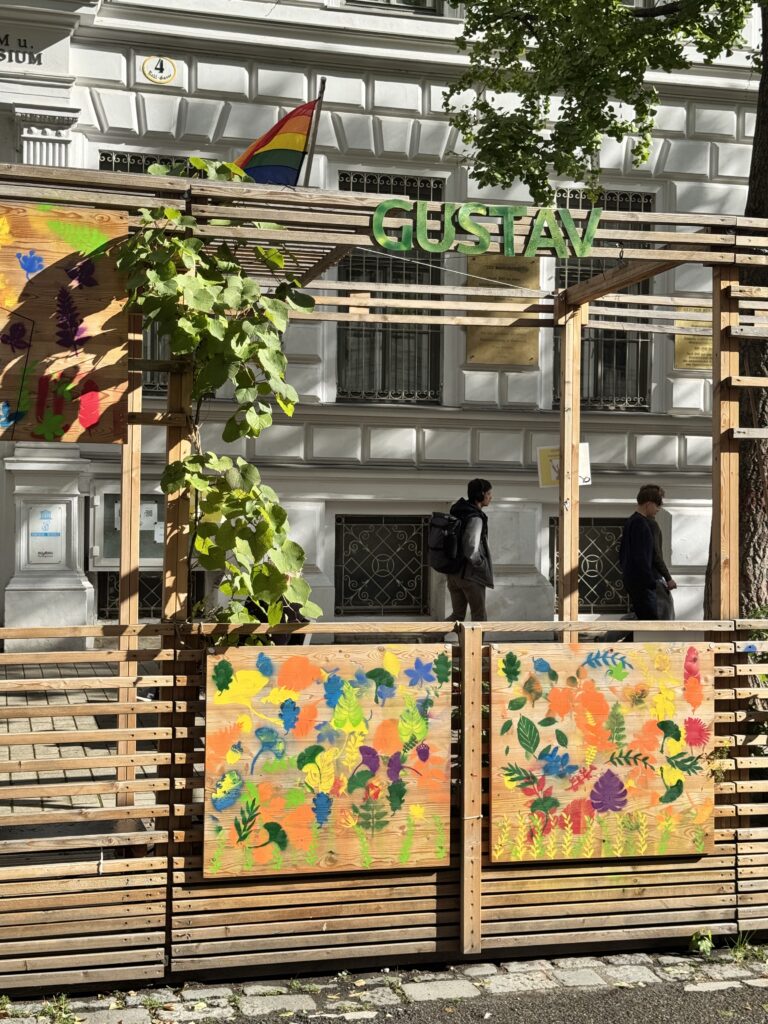
Last month, I had the opportunity to travel to Vienna, a city widely known and recognized for its thoughtful approach to urban planning and citizen-led public space initiatives. Recently, I was thinking more about small-scale participatory projects as strategies for reimagining streets and other public spaces in the face of climate pressures, and, in particular, about the contexts in which they flourish and the mechanisms that allow them to materialize. Luckily, Vienna offers remarkable opportunities to observe just that. While walking through the residential streets in the Spittelberg and Mariahilf districts, I came across some striking interventions: compact wooden structures, sometimes hand-painted, often filled with greenery and street furniture. It was particularly noticeable to me how their physical form changed the rhythm and the character of the street, interrupting lines of parked cars and offering pleasant and colorful spaces for sitting, lingering, and interacting with others. These parklets, as they’re called, are small public spaces created specifically by reclaiming former parking spots.
Photo: Savannah Siekierski (October 2025)
The Covid-19 pandemic, in particular, further accelerated the reclaiming of spaces typically reserved for cars, as residents, restaurants, and other local businesses sought outdoor spaces to support social life and health-related needs, mental and physical.
The idea to transform parking spaces into spaces for people is not new, however. It dates back to 2005, when a group of urban activists in San Francisco converted a single parking space into a temporary park, feeding the meter with coins to legally occupy the spot. An example of tactical urbanism, improvised and playful yet consequential nevertheless, the parklet resonated across other cities. Over the last two decades, it evolved from a guerrilla protest to an often more institutional tool of urban change, with funding, permits, and guidelines. The Covid-19 pandemic, in particular, further accelerated the reclaiming of spaces typically reserved for cars, as residents, restaurants, and other local businesses sought outdoor spaces to support social life and health-related needs, mental and physical. Beyond accommodating people and human interaction, parklets can also host dense greenery, bike facilities, or art exhibitions.
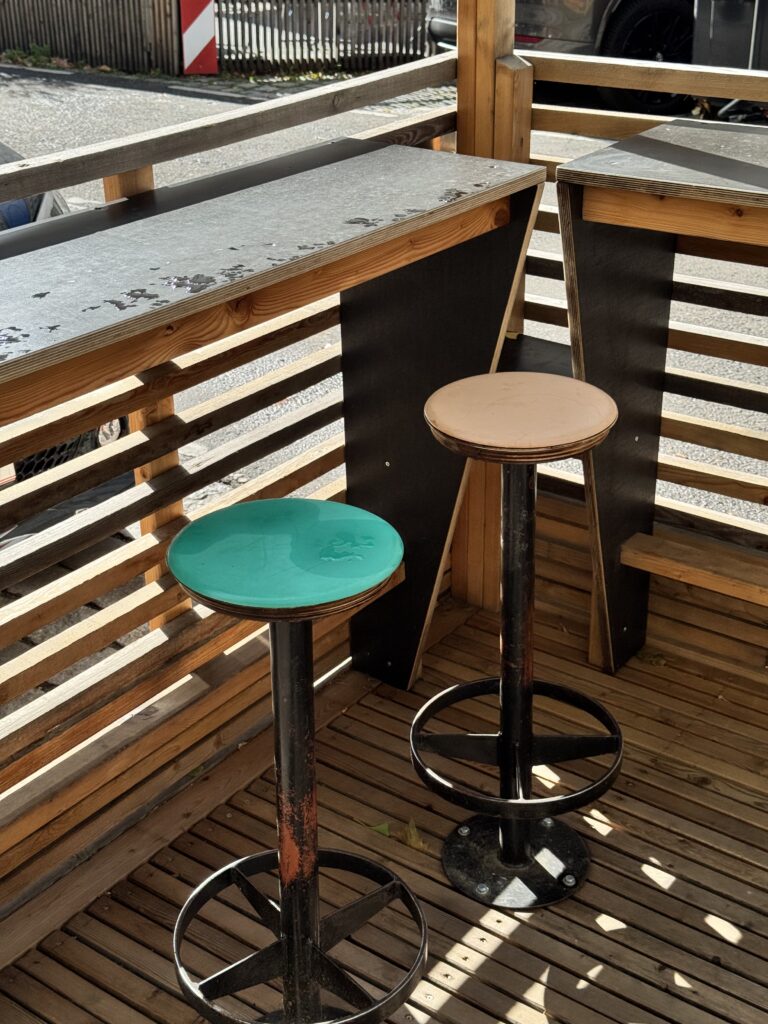
In Vienna, many of the parklets are made possible through the Grätzloase program, an initiative of Lokale Agenda 21. The name itself, tying Grätzl (Viennese German for neighbourhood) with Oase (oasis), captures the essence of the projects: small, pleasant resting spaces created by and for the community. The process is highly participatory — residents can submit proposals, often collaborating with neighbours or local schools, and, if selected, receive further support with funding, permits, materials, and installation. What makes this model particularly powerful, besides the valuable physical transformation of the city’s public spaces, is that it enables an important shift in agency. By giving residents the tools and the authority to change their surroundings, the Grätzloase program reframes public space as a collective resource, where ideas can be implemented and needs met, relatively quickly and more directly.
Photo: Savannah Siekierski (October 2025)
While walking through the residential streets in the Spittelberg and Mariahilf districts, I came across some striking interventions: compact wooden structures, sometimes hand-painted, often filled with greenery and street furniture. It was particularly noticeable to me how their physical form changed the rhythm and the character of the street, interrupting lines of parked cars and offering pleasant and colorful spaces for sitting, lingering, and interacting with others.
However, such initiatives depend on particular local conditions and often reflect a broader planning culture. While similar interventions have appeared in other European cities, their development and reception can vary considerably. An attempt to introduce new parklets in Warsaw earlier this year illustrates the importance of thoughtful, citizen-led implementation: placed alongside a busy and loud Puławska Street — after city officials relocated the project from its originally proposed, quieter and greener site — the project drew criticism for its inappropriate placement, lack of shelter from the snow and high costs, particularly given its limited usability. Responding to this mismatch between design and everyday needs, the city announced revisions to its participatory budgeting framework to better support local initiatives and avoid similar situations in the future. Beginning this year, residents will be able to vote not only on city- and district-level proposals, but also on smaller neighbourhood projects, with municipal support provided earlier in the process, for example, through project-writing workshops.
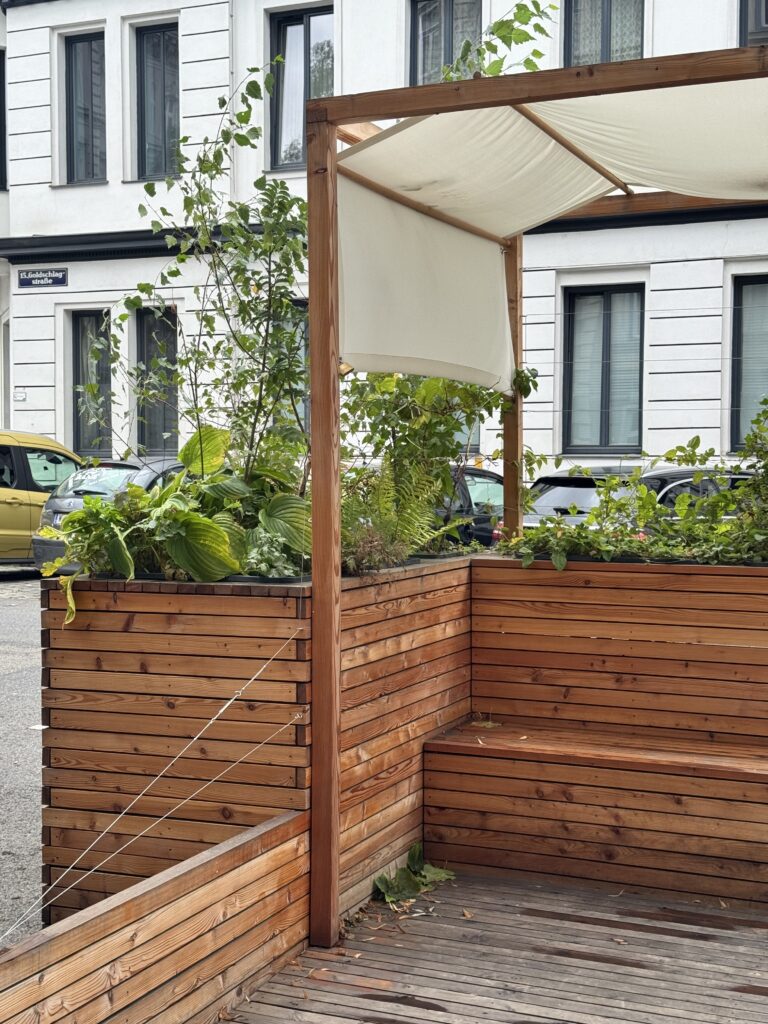
This shift triggers a question about the future of our urban lives, particularly in the context of the climate emergency and the urgent need for more resilient and equitable models: who gets to decide what transformations are implemented in our cities and how?
Why is this story important? It demonstrates that the success of even such relatively simple and temporary projects as parklets hinges on the complex interplay of design, governance, and everyday conditions, and is not automatically transferrable across different urban and governance contexts. Not only this, it reminds, mainly to the authorities, that parklets are not just decorative additions to our streets, but really mark a broader paradigm shift: from centralized, top-down models of urban planning toward more distributed, citizen-led processes of public space production and change.
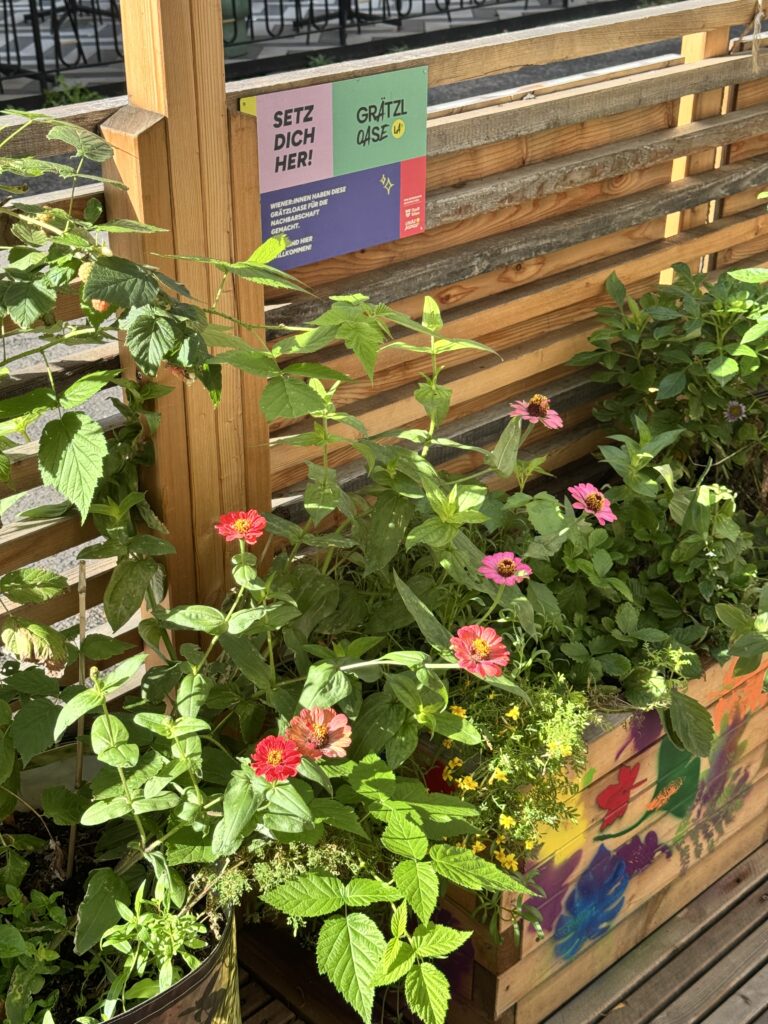
Beyond accommodating people and human interaction, parklets can also host dense greenery, bike facilities, or art exhibitions.
This shift triggers a question about the future of our urban lives, particularly in the context of the climate emergency and the urgent need for more resilient and equitable models: who gets to decide what transformations are implemented in our cities and how? During that same October visit to Vienna, I encountered the work of an Indian architect, Anupama Kundoo, whose exhibition at the Architekturzentrum Wien (curated by Angelika Fitz and Elke Krasny) envisioned spaces designed as living systems grounded in care, coexistence, and ecological reciprocity.
By giving residents the tools and the authority to change their surroundings, the Grätzloase program reframes public space as a collective resource, where ideas can be implemented and needs met, relatively quickly and more directly.
Although Kundoo’s work originates in a very different cultural and climate context, her ideas resonate with the ethos of Vienna’s parklets and many other bottom-up initiatives across our cities. Both challenge the notion that urban change must come from above and that good urban models, once identified, can be transferred across contexts automatically. Instead, both suggest that meaningful transformation begins with acts of collective imagination, with awareness of and sensitivity to the local needs, available resources, constraints, and possibilities. As we can observe in successful pop-up interventions such as parklets, guerrilla crosswalks, or bike lanes, when residents are given the right tools, support, and trust, even small interventions can contribute to meaningful urban change. Vienna shows what is possible; the question now is how cities like Warsaw might translate these principles into their own local realities.
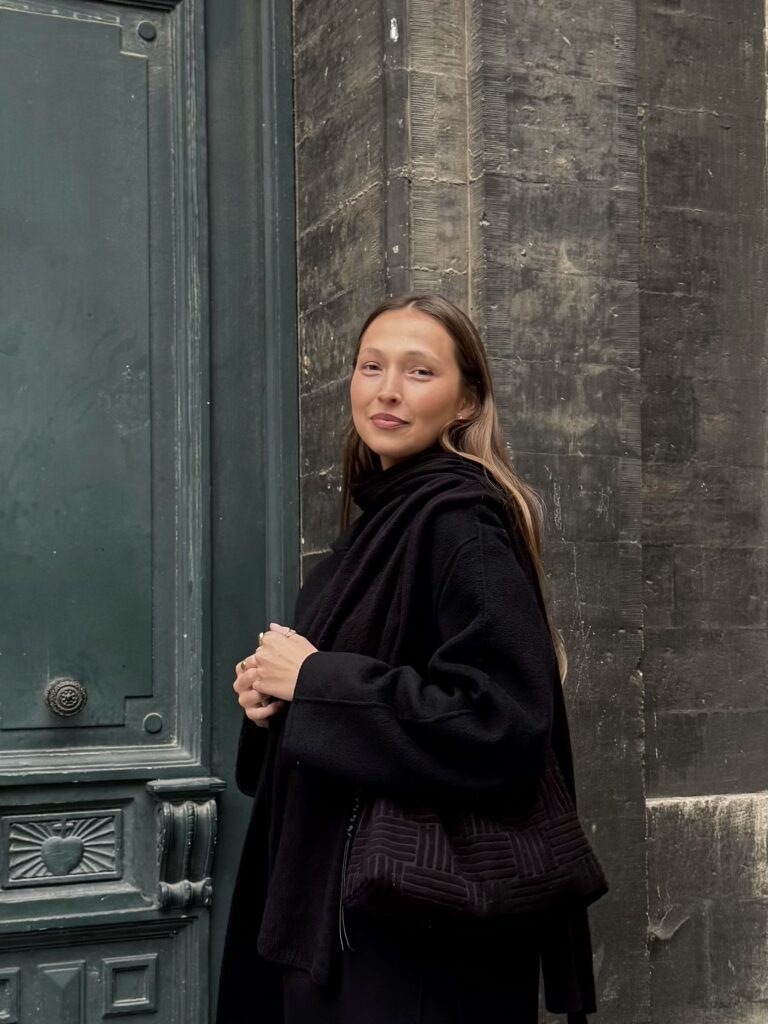
Savannah Siekierski is a Master’s student in Urban Studies at ULB/VUB in Brussels, while also holding previous bachelor’s and master’s degrees in Psychology and Cognitive Neuroscience. She is particularly interested in bridging these fields with urbanism to explore how people feel, perceive, and connect to their environments. Her research focuses on the subjective and sensory experience of urban space, with a special emphasis on walking as an embodied practice. Savannah joined Pedestrian Space as an intern to align her academic interests in the psychology of urban experience with the organization’s focus on participatory advocacy and resident-centered urban perspectives. During her internship, she is pursuing research in Warsaw through methods such as auto-ethnography and walking interviews. Alongside her fieldwork, she is also contributing a media diary reflecting on her process and offering insights into walkability and urban life.
Sources:
Architekturzentrum Wien. (n.d.). Reichtum statt Kapital: Anupama Kundoo [Exhibition]. Architekturzentrum Wien. https://www.azw.at/en/event/reichtum-statt-kapital-anupama-kundoo/
Lokale Agenda 21 Wien. (n.d.). Grätzloase. Lokale Agenda 21 Wien. https://la21.wien/graetzloase/
Łuba, M. (2025, January 15). Nowe parklety stanęły na Mokotowie. W otoczeniu ruchliwej ulicy i spalin. Dlaczego? Warszawa Nasze Miasto. https://warszawa.naszemiasto.pl/nowe-parklety-stanely-na mokotowie-w-otoczeniu-ruchliwej-ulicy-i-spalin-dlaczego/ar/c1p2-27164403
Peuch, B. (2022, October 26). The parklet movement — creating green space on our streets. Lowimpact.org. https://www.lowimpact.org/posts/the-parklet-movement-creating-green-space-on-our-streets/
TVP Warszawa. (2025, January 11). Absurd na Mokotowie. Miasto postawiło nowe parklety tuż przy ruchliwej ulicy. TVP Warszawa. https://warszawa.tvp.pl/84469829/na-mokotowie-miasto-postawilo-nowe parklety-tuz-przy-ruchliwej-ulicy
